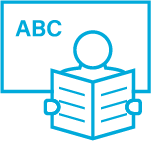


In this study, 77 struggling readers in Namibia were studied. Those who played GraphoGame increased their skills in letter sounds, phonological awareness, reading, and spelling to a greater extent than the control groups.
Author: Pamela J. February
Source: February, P. J. (2018). Teaching and learning to read in Afrikaans: Teacher competence and computer-assisted support. Jyväskylä: University of Jyväskylä, 2018, 138 (JYU Dissertations 5). http://urn.fi/URN:ISBN:978-951-39-7515-9
This study investigated the motivations and emotional and behavioural problems of struggling readers, together with the viability of using GraphoGame as a learning intervention tool. Participants were 77 learners in Namibia. Struggling readers who played GraphoGame increased their skills in letter sounds, phonological awareness, reading, and spelling to a greater extent than the control groups, whilst effect sizes were large.
What is the Strengths and Difficulties Questionnaire (SDQ)?
What is intrinsic motivation?
What is the self-concept of the learner?
What is GraphoGame?

The study
The aim of this study was to investigate the effectiveness of extended use of GraphoGame Afrikaans in intervening with learners who continue to struggle despite having had initial GraphoGame exposure in grade 1.
Research questions:
Participants were 77 students in Namibia. Learners selected for the GraphoGame group were the lowest scoring 20 learners from a previous study who had failed to demonstrate substantial improvement, despite having previously played GraphoGame Afrikaans. In addition, two further control groups were included: one of 30 learners who had played GraphoMath, and another of 30 learners receiving teaching as usual.

Findings

Implications
How to teach reading